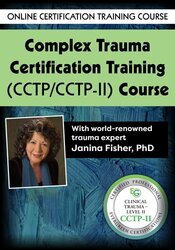How Trauma Is Stored in the Body — And Why It Matters in Your Work

Trauma isn’t just a story clients tell. It’s an experience that lives in the body. In fact, much of what clients struggle with day-to-day may not feel like memory at all. That’s because trauma isn't always stored as a coherent narrative. Instead, it's encoded as implicit emotional and bodily states.
How the Body Stores Trauma
When someone experiences a traumatic event, the brain often bypasses the narrative, left-brain processing in favor of the body’s faster, survival-oriented responses. This shift has evolutionary roots. If a threat arises, like a predator in the wild, freezing or hypervigilance can be more protective than reflecting on the last attack.
But this survival response comes at a cost. When fear, loneliness, or helplessness are encoded not as explicit memories, but as emotional and physiological states, they can resurface without context. Clients often don’t realize they’re remembering. They just feel anxious, numb, or shut down. These experiences can appear out of nowhere and feel deeply confusing.
As Dr. Dan Siegel has pointed out, these implicit memories don’t carry the sensation of being recalled. Instead, people act, feel, and respond to the present as if it's the past without conscious awareness that they’re being influenced by earlier trauma.
What Trauma Triggers Really Mean
This is what we refer to when we talk about being "triggered." It's not just emotional reaction. It’s the body instinctively responding to present stimuli that resembles past danger, even subtly.
A powerful example comes from a client we'll call Ben. He came to therapy each October, convinced his depression was due to seasonal affective disorder. But a deeper conversation revealed that cool, cloudy weather triggered a somatic memory of being trapped inside during the winters in North Dakota with his abusive mother. His depression wasn’t seasonal. It was his nervous system bracing for a threat that was no longer there.
What This Means for Your Clinical Work
Understanding the body’s role in storing trauma invites a shift in how we approach therapy:
- Normalize non-narrative trauma symptoms. Many clients feel ashamed or confused when they can’t "remember" what’s causing their distress. Helping them understand that trauma is often stored as sensations or emotions—not stories—can reduce shame and increase insight.
- Use somatic language. Ask clients where they feel the emotion in their bodies. Explore what their bodies are doing when certain feelings arise—tightening, freezing, bracing, collapsing. This builds awareness and lays the groundwork for regulation.
- Recognize the disguised memory. Emotional states like dread, helplessness, or grief may not be new — they may be echoes of earlier experiences. Especially during times of collective stress (like pandemics, political unrest, or social disconnection), clients may find old wounds reactivated without clear cause.
- Support implicit integration. Approaches like somatic experiencing, EMDR, sensorimotor psychotherapy, and parts work can help clients gently process these implicit memories without needing full narrative recall.
Trauma isn’t just something that happened then. It’s something that can live on in the nervous system now. As therapists, when we hold space for clients’ body-based experiences and help them make sense of reactions that “don’t make sense,” we empower them to rewrite their relationship to their past and reclaim safety in the present.

Complex Trauma Certification Training Level 1 & 2 (CCTP/CCTP-II) Course with Janina Fisher





